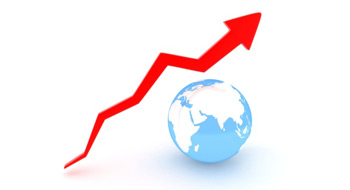

It’s hard to pick up a newspaper without someone referencing the fact that many stock markets are at their all-time highs. The S&P 500 Index surpassed its previous record level of approximately 1,500 in 2013 and is near the 2,000 mark, while the Canadian stock market, the S&P TSX Composite Index, is trading well above 15,000. Sounds good, right?
What the articles fail to mention is that these “highs” have been reached only after years of clawing back substantial losses that were experienced by investors after the collapse of Lehman Brothers in 2008. They also fail to take into account inflation. If inflation is also considered, then markets have not yet surpassed the highs reached in 1999 and improvements in corporate earnings. It’s logical that equity highs in each successive cycle should surpass the highs from the prior cycle. Certainly if you had the good fortune to have invested in the S&P 500 post-February 2009, you are one happy investor, regardless of current index levels.
Surprisingly, no one is mentioning bond market yields, which have rallied since the beginning of 2014. Pension fund sponsors were ecstatic at the end of 2013, as the 10-year bond yield, often used as a proxy for long-term pension liabilities, had risen to 2.77%, up from historic lows (sub 2%). Strong equity market returns, combined with higher bond yields, saw funded positions, whether going concern or solvency, improve markedly. As at June 30, 2014, the 10-year bond yield was just below 2.4%. Suffice it to say, some of those 2013 gains may have eroded in the first six months of this year, depending on the selected asset mix and the type of bonds held.
While market commentators may be misleading in their equity market reports, what is true is that equity markets have rallied strongly over the past few years. It’s natural to be asking whether markets have become expensive and equity allocations should be reduced. The short answer is probably not, though there is no compelling reason to add to equity positions either.
The very strong equity market returns experienced in 2013 were driven, to a large degree, by increasing valuations. Over the long term, equity returns are generated from earnings (current and prospective). Global growth remains muted as the developed economies continue to struggle with indebtedness and key emerging economies, notably China, rebalance toward a more sustainable but lower level of growth. It’s expected that the current business cycle will continue a bit longer, with muted wage pressures providing support to revenue growth and profit margins, though less than in previous years.
That interest rates are expected to remain low and gradually normalize over time is also supportive for equity markets. However, much of this has already been priced into the market. Risks to this scenario are centred around growth and inflation, which may come in lower than expected. Should this be the case, bonds represent better value than cash, despite the current level of yields.
In this low interest rate environment, corporate bonds, regardless of credit quality, have been sought by yield-hungry investors. Spreads have tightened to approximately 100 basis points for investment grade credits and 300-plus basis points for high yield. These spreads reflect a lower expected default environment—similar to equities, an extended economic cycle and supportive monetary policy should lead to an extended credit cycle. However, the relatively tight credit spreads limit the potential for further contraction and therefore, future excess returns. They also provide little cushion if defaults do increase and/or there is another credit shock.
As with equities, there is little reason to add to bond positions or increase duration. Feels as if we have been here before…
